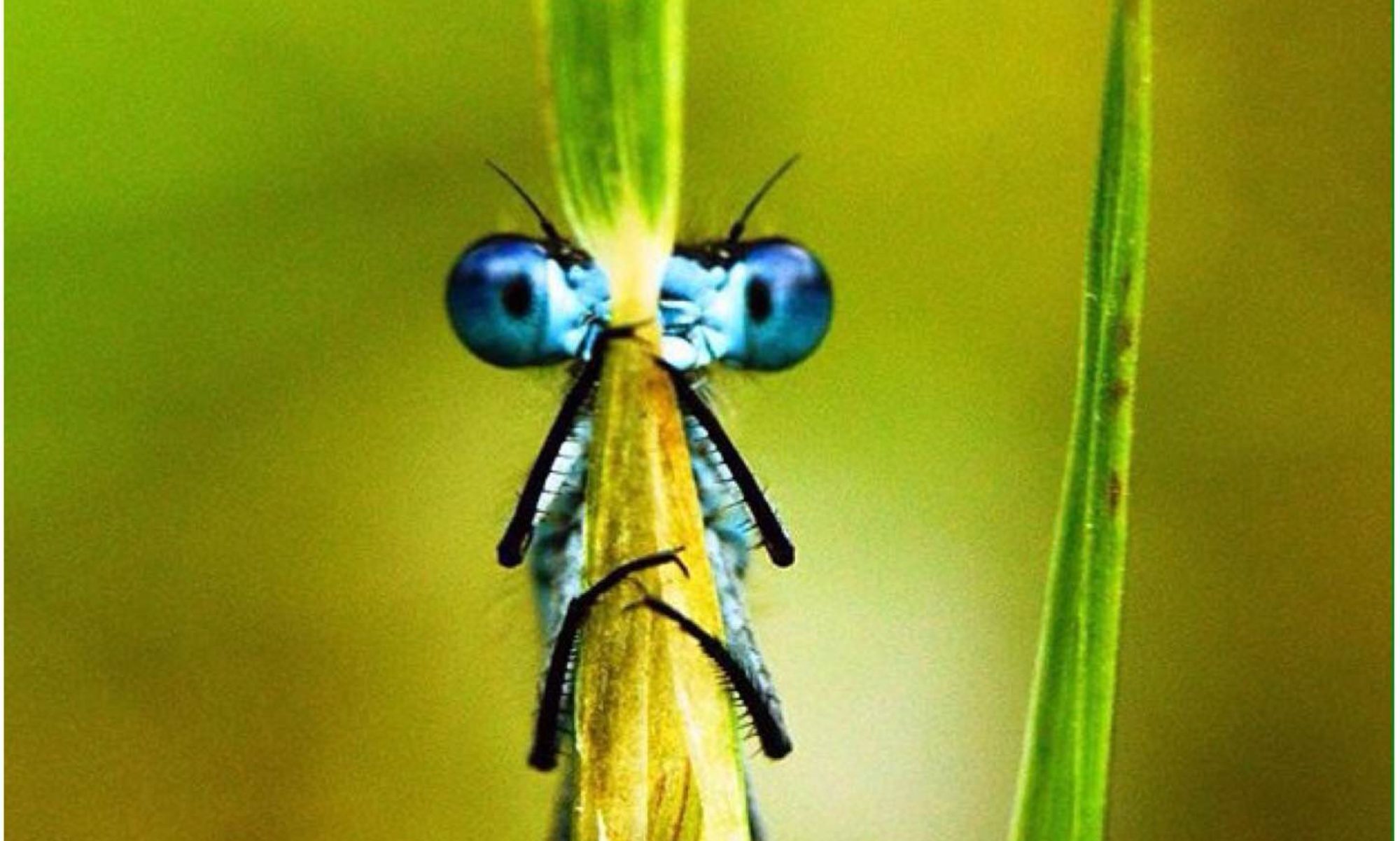Happy Christmas to everyone. I hope you are having a great time and looking forward to a good New Year.
As the weather here in the UK has been a tad damp and windy I thought it would be good to just bring a bit of colour at this time.
My Facebook friends will no doubt have seen the monthly albums of plants I have been posting over the year. I took a look at them again and decided to pull a few of the ones from each month that I particularly liked for the blog.
The plants may or may not have a bushcraft use, they are just the ones I really liked and not some sort of ID guide.
If I decide on a bit of foraging I only pick plants that I have 100% identified and that it is legal to do so. If you have positively identified a wild plant and have never tried it before then I advise you to test your tolerance to it first. A great explanation on this can be found on Robin Harfords Eat Weeds site. The test is clearly laid out and simple to remember.
I will name each plant and one or two uses (if I know of any). Apart from online references which I will link to in the post my main source of reference will be from the excellent and little-known plant ID book by Charles Coates called The Wildflowers of Britain and Ireland.
February
One of the hidden gems of the Common Holly tree (Ilex aquifolium) is found on its leaves. Here you will find the home of the Holly Leaf Miner larvae (Phytomyza ilicis). I studied this little larvae in university and it still intrigues me to this day. The adult fly lays an egg in the stem of the leaf and when it turns into a larvae it burrows into the leaf. A large circular exit hole (over 1mm) usually means the larvae has hatched successfully. A small circular hole usually means the larvae has been predated by a parasitic wasp and a triangular tear as you see here means a blue tit has had a snack.
I have put a link to an excellent PDF on the Miner by the Field Studies Council at the bottom of the post.

Learning to identify plants when not in flower is a must for bushcrafters so as to be able to forage successfully year round.
On the left you can see the purple spotted leaves of the Arum plant sometimes known as Cuckoo-pint or Lords and Ladies (Arum maculatum) and on the right the crinkly leaves of the Wild/Common Primrose (Primula vulgaris).
I advise people not to touch Arum as it can cause quite nasty allergic reactions if not handled correctly. Arum has traditionally been used as a soap (called Portland Sago) and the starch from the root was commonly used to stiffen Elizabethan ruffs. My favourite use though I found in Coates: “Victorians omitted it from their flower guides because of its suggestive shape. For some reason, young men placed it in their shoe to gain the prettiest dance partners”. Unless you are an expert in processing this plant I would advise you just to identify it in all its different stages and leave it be.
The Primrose is a different resource entirely. The word Primrose comes from the latin Prima rosa meaning ‘first rose’. Once identified properly this makes an excellent addition to any salad or a tasty snack while foraging as the leaves and flowers are edible. The leaves and flowers can be used to make tea and I have heard of friends making a wine using the flowers.
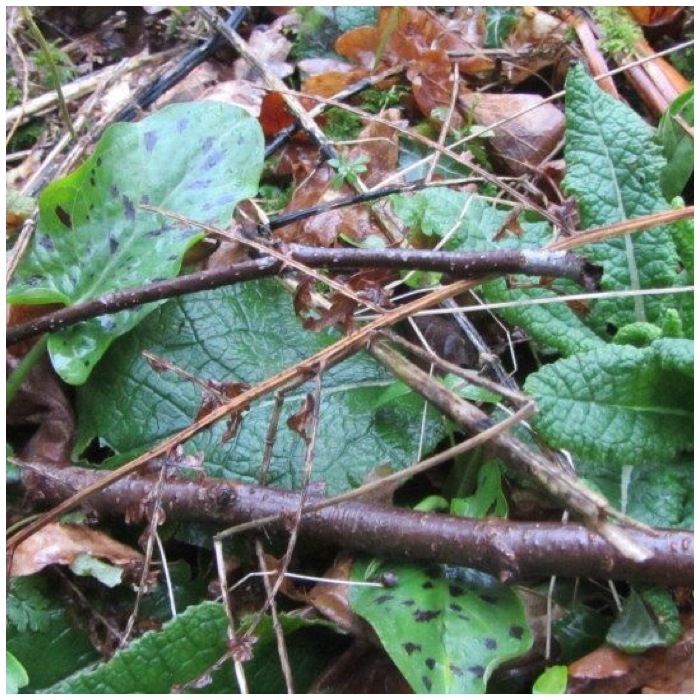
March
The beautiful Blubell (Hyacinthoides non-scripta) starts to stick its leaves out in March. I loved the way this one had managed to pierce some leaf litter from the previous year. Bluebell in conjunction with some other species can be an indicator species for ancient woodland.
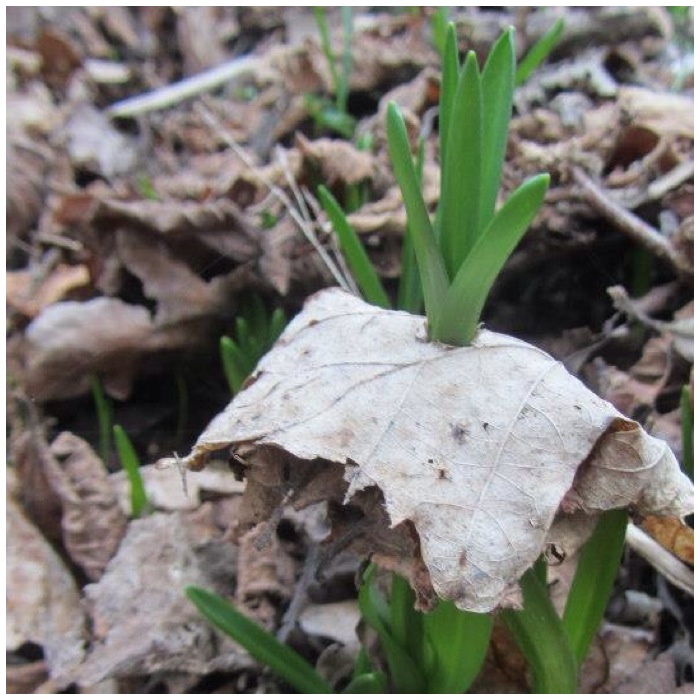
The picture of these Crocuses was taken outside our church and it is a sight I love to photograph every year.
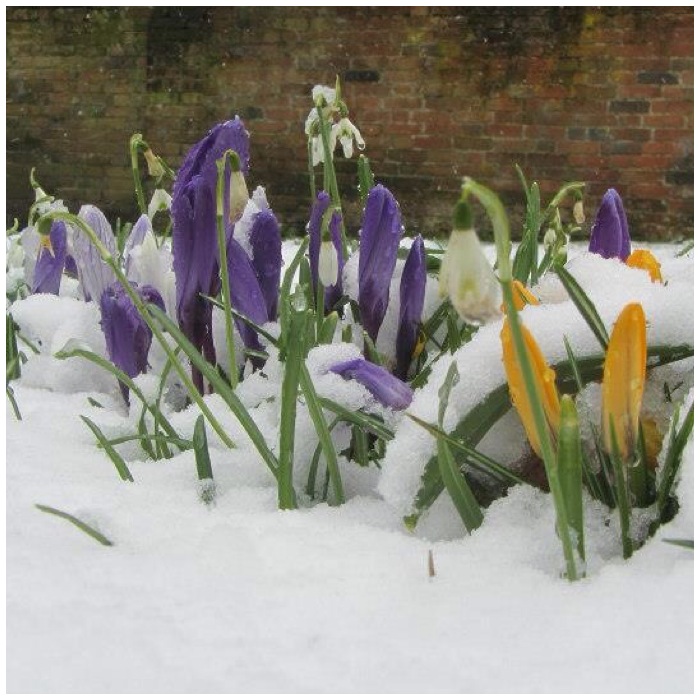
April
Another lovely sight in the early spring is the appearance of the catkins on the Goat/Pussy Willow (Salix caprea). This tree, apart from its medicinal uses, makes for excellent cordage from the inner bark and is a great bowdrill wood. Watch out when you burn it as it does tend to spark a bit. These are male catkins I think and are one of the earliest indicators of spring, appearing long before the leaves.
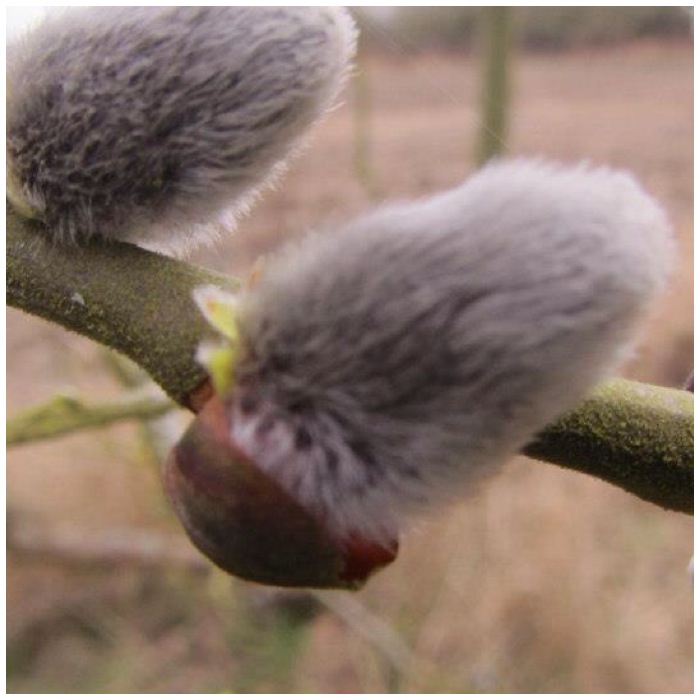
I took this picture of the Primrose with the flowers and the Foxglove (Digitalis purpurea) on the right without the flowers as a comparison. When both do not have flowers they can be confused for each other. The Primrose has a more rounded leaf tip and the Foxglove has a very pointed leaf tip. As a forager in the early spring/late winter it is important you can comfortably identify both these plants. Foxglove is still used today in a synthetic form as a heart drug, so is, as Coates states, “Best left for the Bees”.
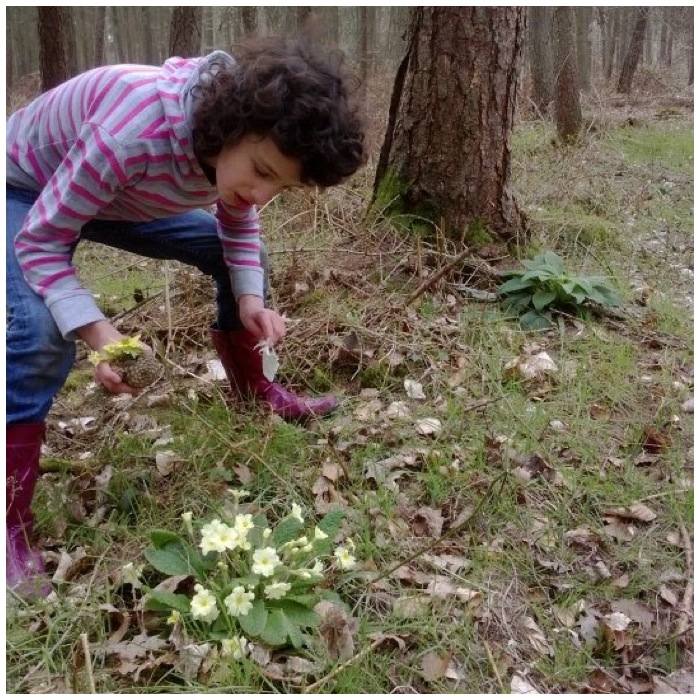
Until I looked in Coates I did not know much about Snowdrops (Galanthus nivalis) other than that they always appear in late winter. Turns out they are not native to the UK and were only first documented in the wild in 1770. In the past the flower was likened to a death shroud so it was seen as unlucky to bring a single one into your house but OK to bring in a bunch. These flowers as you can guess come from the local graveyard – kind of apt in the light of this new knowledge for me.
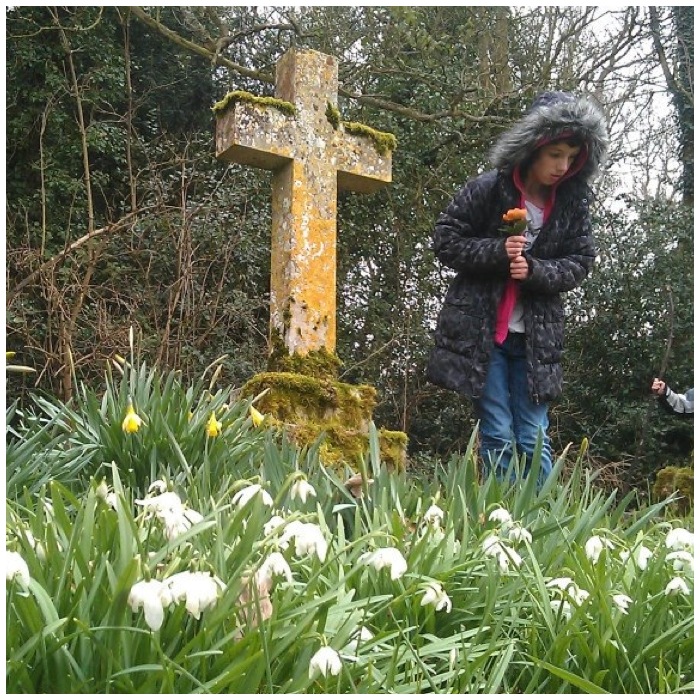
Butterbur (Petasites hybridus) is not a plant I see too often in the wild. This one I found on the edges of a wood in the grounds of a stately home. As well as being rather beautiful it has some medicinal uses for treating migraines.
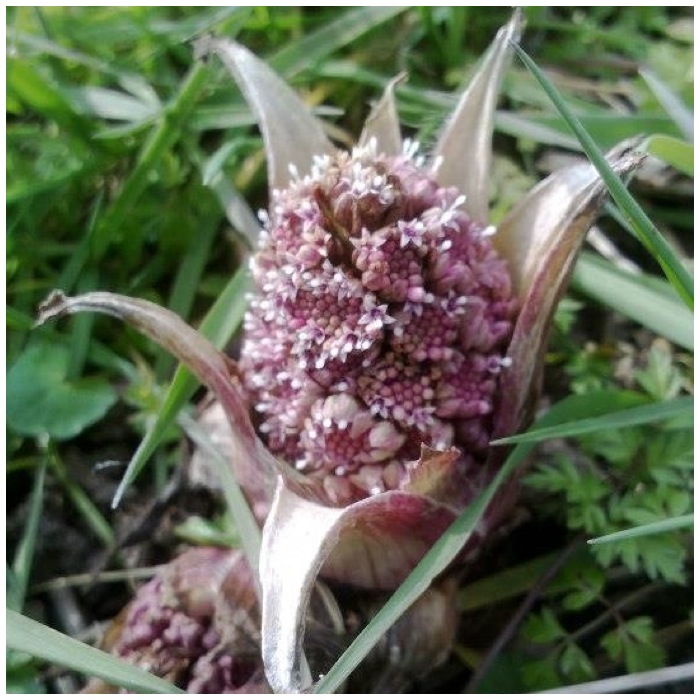
May
A sight that cannot be beaten is a carpet of Bluebells. I did watch a programme where Ray Mears crushed the bulb up in his mouth and spat it out to make a form of primitive glue. Not something I’ve tried personally but I have had limited success using the crushed leaves for fletching primitive arrows.
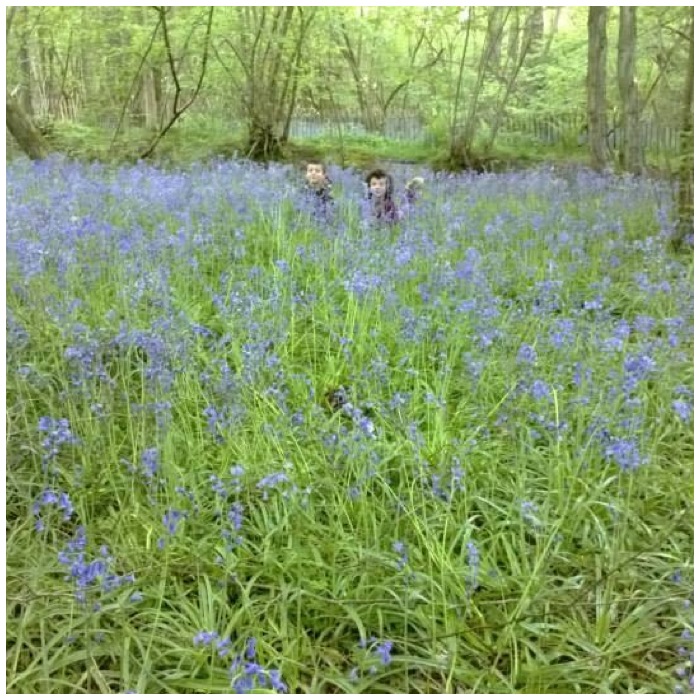
This picture I took at Mottisfont House in Hampshire. I think it is a Magnolia tree but it does makes a perfect canvas for some climbing children.

According to Coates the Fritillary (Fritillaria meleagris) is a favourite of rabbits which is possibly a reason I do not see it very often in the wild. It is such a striking flower with these drooping petals.
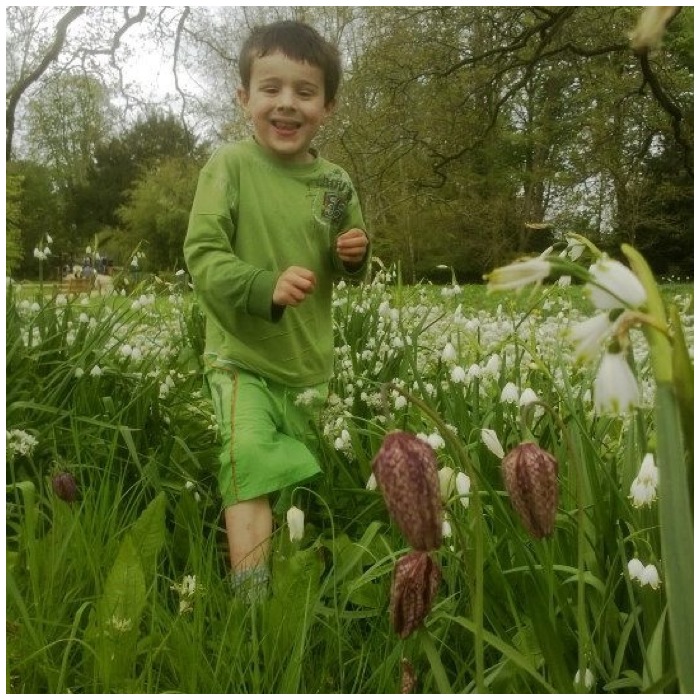
Bugle (Ajuga reptans) is a common plant found around my village growing in the long grass of the meadows. This plant has long been used to treat wounds but from reading Coates it seemingly has been used by herbalists to help treat hangovers. You just never know sometimes.
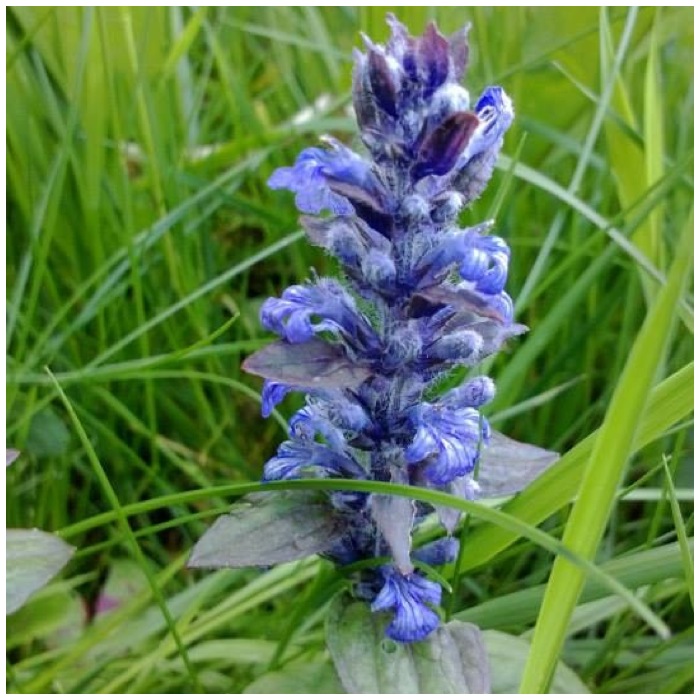
Bugle
Ribwort Plantain (Plantago lanceolata) like the other plantains is a great bushcrafters’ plant. It is a hardy plant able to withstand a lot of foot traffic. The leaves can be made into a poultice or ointment to help stem bleeding or to soothe burns and stings. One herbalist explained to me that chewing some of the seeds helped to keep mozzies away and some of my bushcrafting friends have made cordage from the fibrous sinews in the leaves. My favourite use is to squeeze the juice out of the leaves and rub it on nettle stings to ease the pain. I have put another good link at the end of the post about Plantain.
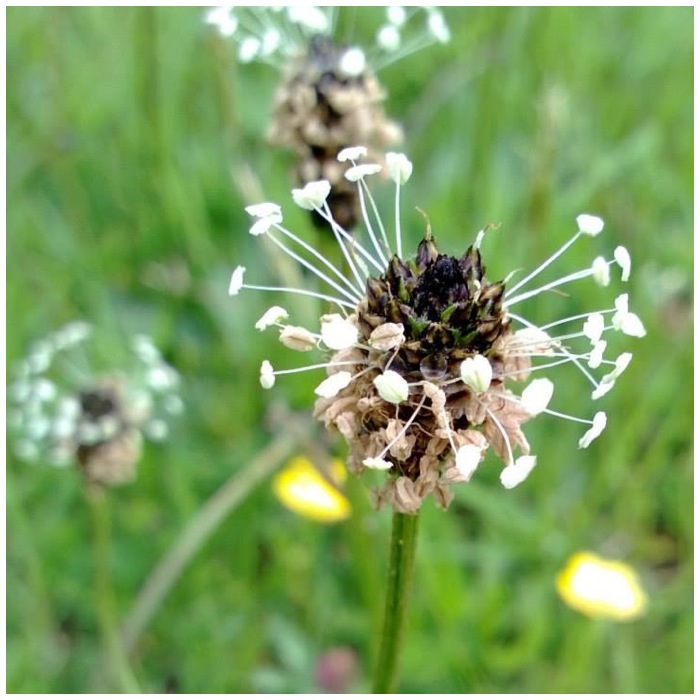
Self Heal (Prunella vulgaris) is one of these plants that most people do not give a second glance. Personally I think it is one of the most beautiful flowers we have. Traditionally used by woodland workers to help close up cuts.
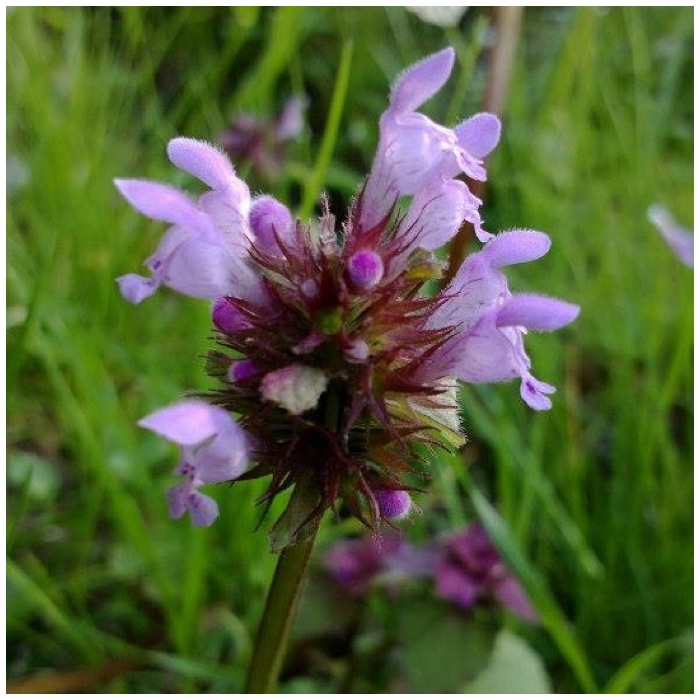
June
I always come across Sundew (Drosera rotundifolia) while leading groups out in the New Forest in the early summer. It is an easy plant to miss but if you keep your eyes open for well lit, low lying boggy areas you will spot them. Apart from its medicinal properties for treating breathing issues it seemingly has a reputation as an aphrodisiac – Coates notes: “Known as a love charm for its ability to lure insects, it was secreted in girls’ clothing by amorous men”.
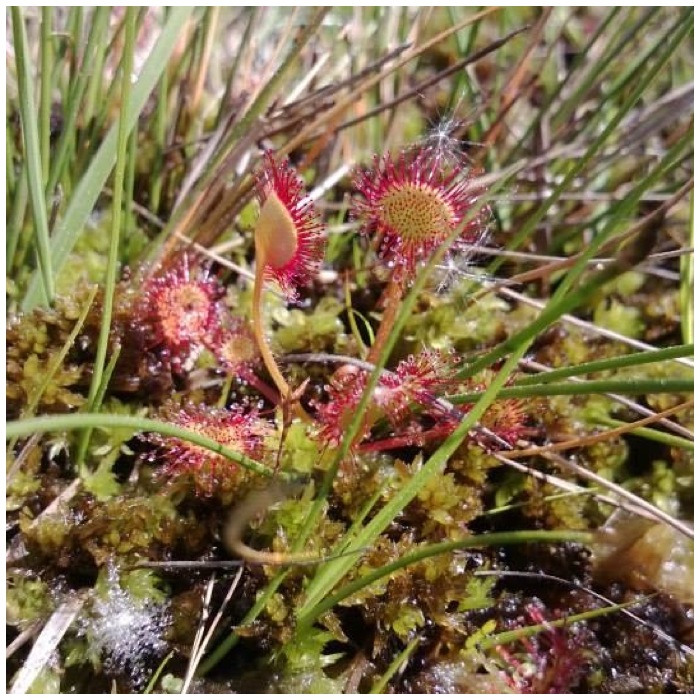
I think that this is the Common Orchid (Dactylorhiza fuchsii) but I may well be wrong. I have spotted quite a few different types this year either in long grass or in woodland glades. In Scotland I have found many on the coast growing in sheltered areas of rocky outcrops.
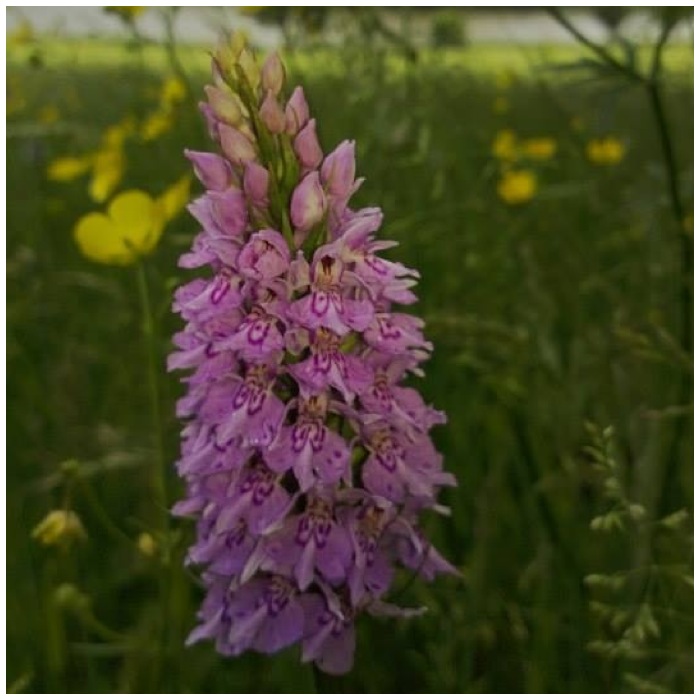
There is one ditch in my village that has a clump of Common Bistort (Polygonum bistorta) growing in it. This is a plant that likes ditches and damp places. I have no bushcraft use for it but I do enjoy the sight of it as I pass by.
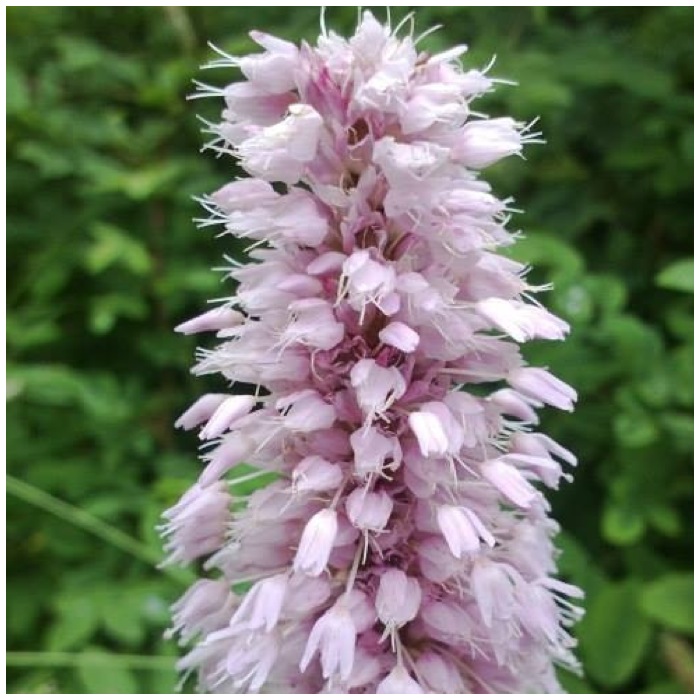
The Meadow Crane’s Bill (Geranium pratense) was used to treat wounds in the past. Coates notes that it has been used as a medicine since Roman times. It seems a very versatile plant for herbalists treating a wide range of ailments including diarrhoea, as a gargle for sore throats and for treating toothache.
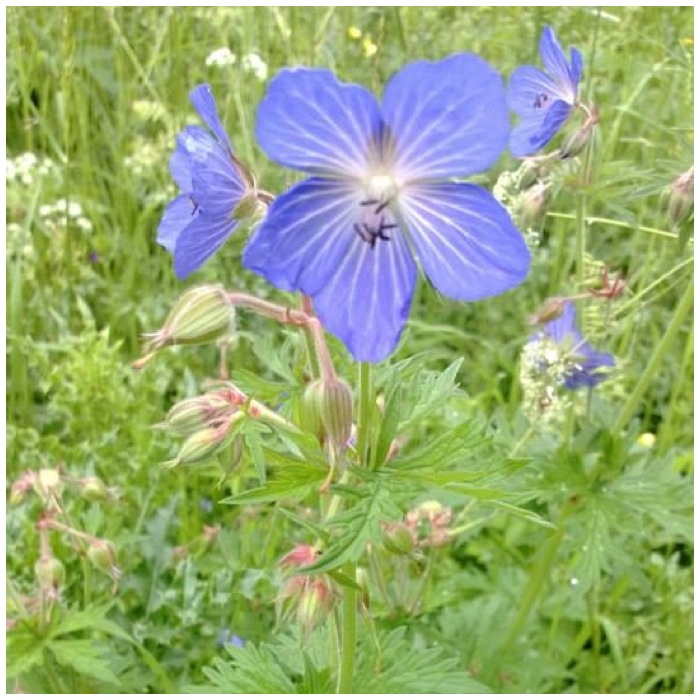
July
This fine example of Borage (Borago officinalis) was from the Eden Project in Cornwall though I do spot this plant on many of my trips. It is edible and has medicinal uses. It’s originally from Southern Europe where the leaves are added to different pasta dishes and soups. Before we added cucumber to Pimms seemingly the preferred addition was Borage leaves (source Wikipedia)

Honeysuckle (Lonicera periclymenum) is another bushcrafter’s friend. Not only is the peeled bark/skin an excellent source of tinder, it is the little devil that makes all those beautiful spirals on young shoots such as hazel that make great walking sticks. Coates suggests it has some medicinal uses as the leaves and flowers contain the active ingredient of aspirin.
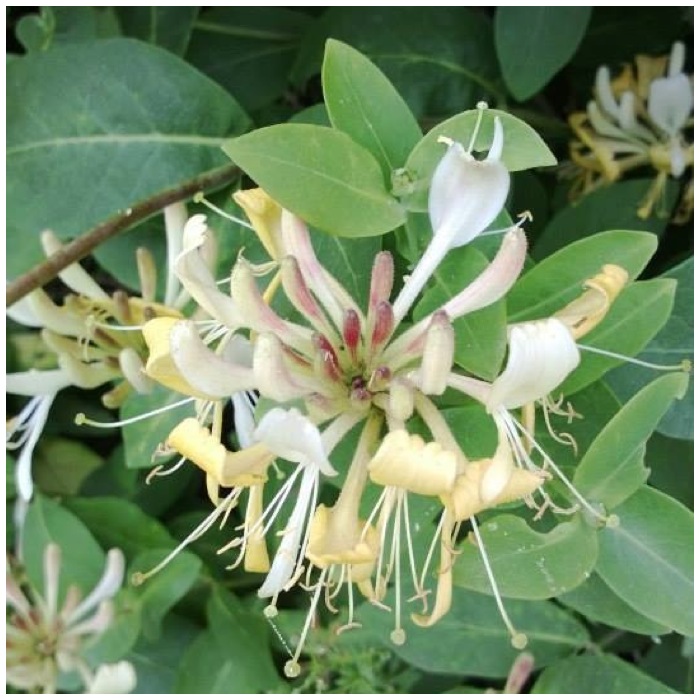
The Wood Aven (Geum urbanum) is one useful plant and has quite a history. Medicinally it has been documented in use as far back as the Greeks and to this day herbalists still use it to help treat fevers and other ailments. The root has a clove-like smell and so was traditionally hung in houses to keep away evil spirits. My favourite use however was as a flavouring for beer. Coates lists lots of other uses: one to know and try out.
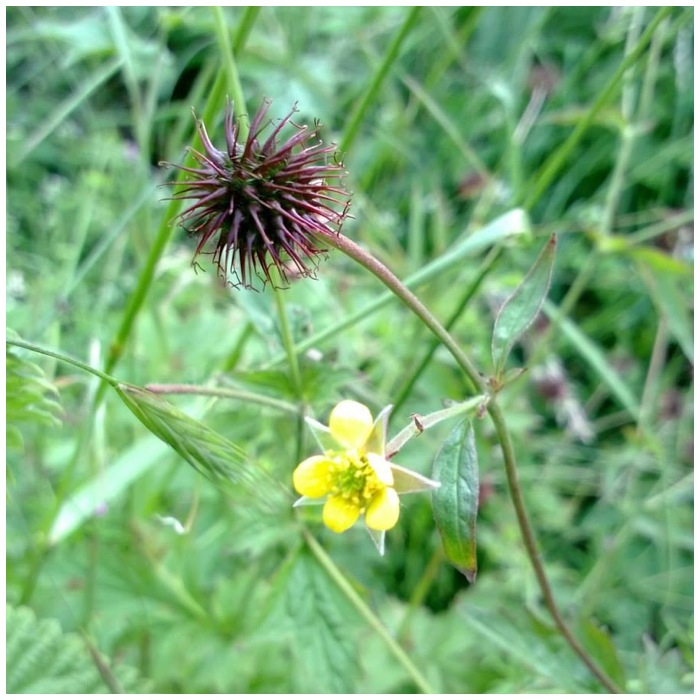
August
I took this picture of the Evening Primrose (Oenothera biennis) at our BCUK Bushmoot in South Wales. A visitor from the States and another medicinal/edible plant. Coates notes that the roots were once eaten as a prelude to wine drinking as we eat olives today. He adds that it contains vitamin F which is helpful with protecting arteries from fatty decay.
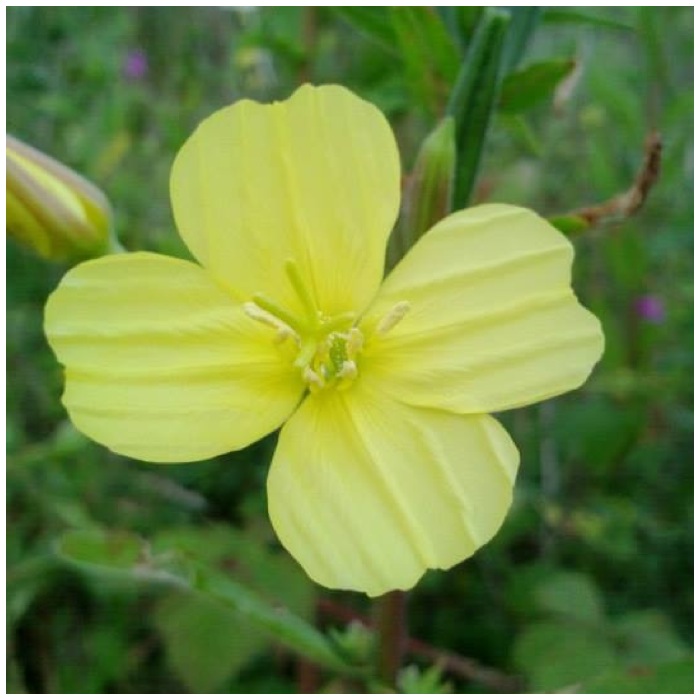
I love to look at the Teasel (Dipsacus fullonum): as far as I am concerned it is a work of art. I use the stem as a hand drill and love to watch the Six Spotted Burnetts feeding off the head. The heads were traditionally used in the clothing industry to raise the fibre of cloth after weaving.
I ask the young ones to feel the leaves (gently) and I love seeing the look on their faces when they feel the barbs on the back of the leaf. When they spot the water that collects as a small pool at the base of the leaf I tell the little ones that this is where fairies come to drink. As a small child you could well believe this as the plant does look like it has magical properties.
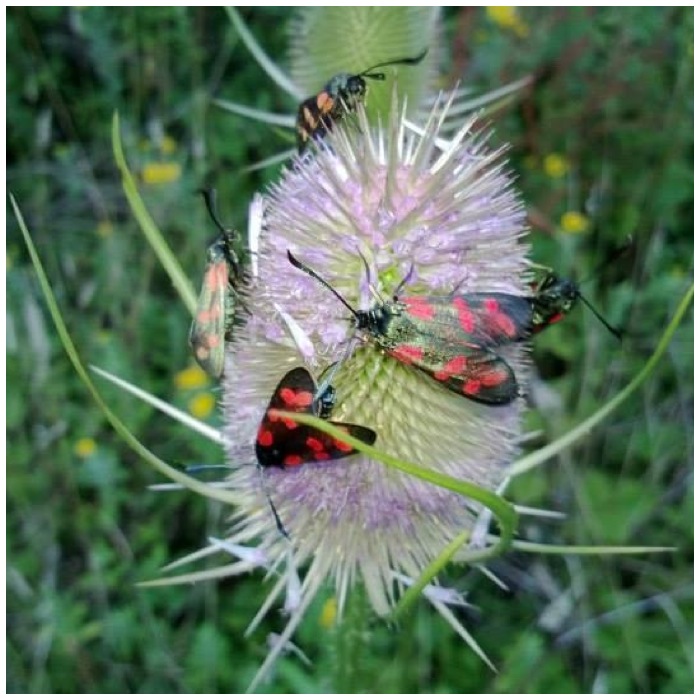
Burdock must be one of the most well known bushcrafters’ plant. It has a two-year life cycle and the root of the plant at the end of its first year’s growth provides good carbohydrates and vitamins. Coates comments that the young leaves are edible which I agree with, but personally I cannot stand the taste of the leaves at any time. The base of the stem when the plant is young is quite palatable though.
I have friends who use the dried-out base of the second year plant attached to a bow drill spindle and swear by it. I like to use the second year stem as a clothes and kit hanger, trimming the branches from the stem leaving a small point protruding where each branch was and hanging it up in a tent for my bits and bobs. This was a traditional method on the Isle of Lewis where I come from as there are very few trees on the island so wood is hard to come by.
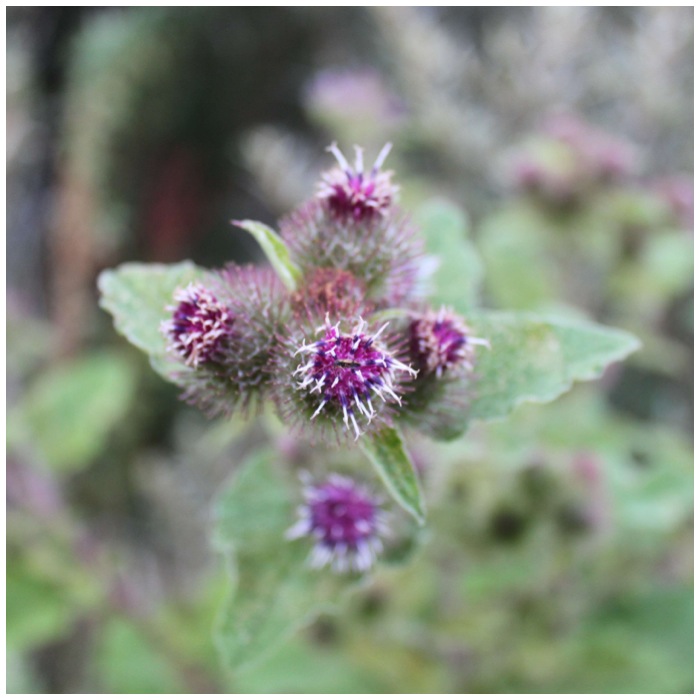
A plant of many names is the Reedmace (Typha latifolia), other names being Cattail, Fairy Woman’s Spindle and now officially Bulrush (caused so much confusion that one). The root, like that of Burdock, is a great source of carbohydrates, you can make a flour out of the seed head (also makes great flash burn tinder) and a passable hand drill. A plant with too many uses to list.
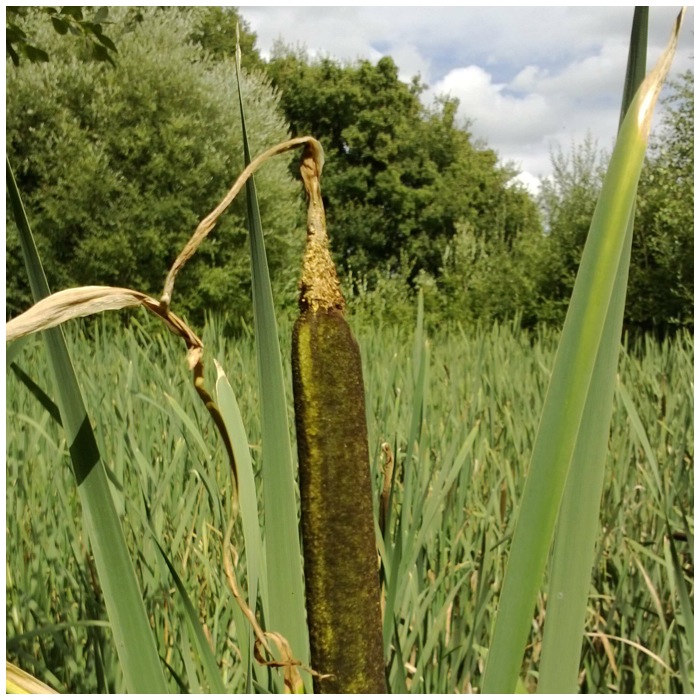
If you have reached this far well done. I did not want to put in so many pictures but it was very hard to choose which pictures to put up.
Apologies if I got anything wrong but I hope you enjoyed them.
Have a great Christmas
Cheers
George
Links
